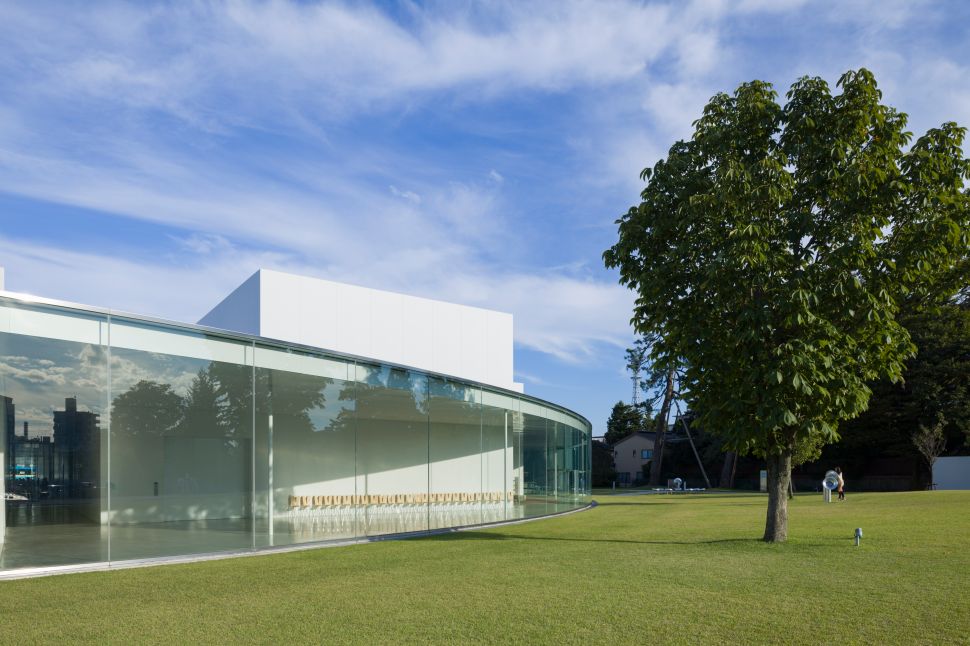In Japan’s Kanazawa prefecture, a 2.5-hour bullet train from Tokyo to the country’s western coastline brings visitors to an immersive contemporary art museum that has quietly enjoyed two decades of ambitious growth. Designed by Japanese architects Kazuyo Sejima and Ryue Nishizawa of SANAA—recipients of the 2010 Pritzker Prize and the duo behind New York’s New Museum of Contemporary Art and the Louvre-Lens in northern France—the 21st Century Museum of Contemporary Art, Kanazawa is housed in a striking circular building composed primarily of glass, creating a structure as open and fluid as the experience it offers.
Under the leadership of director Yuko Hasegawa, the museum debuted in 2004 with just 200 artworks—a collection that had taken roughly four years to build. Twenty years later, the permanent collection includes around 4,170 works, a 1,900 percent increase. These span various mediums but remain limited in scope: the museum only acquires pieces created in 1980 or later, and more narrowly, only those that influence new values or offer points of reference within the context of post-1900 art history, with a preference for works by or connected to artists from the Kanazawa region. Artists commissioned by the museum are encouraged to produce site-specific installations that will anchor their work in Kanazawa.
SEE ALSO: Noah Davis’ Legacy Lives On in the Barbican’s Poignant Retrospective
“I believe that the permanent exhibition works associated with the building and grounds of the museum are distinctive and noteworthy as part of our collection,” Hiroaki Ochiai, the museum’s public relations chief, told Observer. “Since contemporary art encompasses a wide range of expressive forms, we do not focus on any particular genre. Rather, we aim to avoid an overemphasis on any one genre and instead look for a diverse range of expressions.”
A recent three-part exhibition series (“Collection Exhibition 1,” “Collection Exhibition 2: Drifting in the City” and “Collection Exhibit 3”) showcased major works from the museum’s holdings. In the first show, pieces ranged from Shimizu Akira’s Color-Blindness Testing Chart No. 10 to German artist Carsten Höller’s Kanazawa Closing Doors (which remained on view through the second show). “Drifting in the City” focused on the theme of urban life, with works that encouraged self-care in the face of cities “violently erasing individual human memories and feelings,” as museum registrar Yishu Hanu wrote. How people “drift along on the river of the city” was at the exhibition’s core. A standout was Homma Takashi’s Tokyo Suburbia photography series, which depicts scenes from children’s everyday lives in Tokyo’s suburbs.
The third show, on view through May 11, 2025, brings together work by twelve artists, including Yasura Takeshi’s glass and glacial meltwater sculpture cosmos and the photo series glacier, both inspired by a 2023 trip to Nepal.
The expansive collecting strategy reflected in these exhibitions catalyzed the museum’s rapid growth, as did a major acquisition from the Kiyoshi Awazu Archive. “In 2006, we received a significant donation of 2,944 items from his family, which greatly contributed to the increase in the overall number of works in our collection,” Ochiai said. While the 21st Century Museum of Contemporary Art, Kanazawa maintains a clear collecting philosophy, the institution remains open to thoughtful detours when they make sense.
Leandro Erlichâs art installation The Swimming Pool, where the illusion of being underwater is created by a layer of water held above a transparent ceiling, casting rippling blue light on the walls.” width=”970″ height=”1455″ data-caption=’Leandro Erlich, <em>The Swimming Pool</em>, 2004; concrete, glass and water, H280 ×W402×D697cm. <span class=”lazyload media-credit”>© Leandro ERLICH, Photo:WATANABE Osamu</span>’>
Andy Warhol’s Diamond Dust Shoes from his 1980–81 Retrospective Series was featured in the first exhibition. Still on view is Anish Kapoor’s L’Origine du Monde, an optical illusion consisting of a large black oval painted on a gallery wall, which easily sparks debate over whether it’s flat or three-dimensional. Olafur Eliasson’s 2010 Colour activity house and The Swimming Pool by Argentine conceptual artist Leandro Erlich also remain visitor favorites.
Only 5 percent of the artists represented are from Kanazawa—a region of just under 462,000 people—although 53 percent are Japanese artists and 63 percent are Asian. That balance will likely shift over time. As Ochiai noted, the institution has no plans to slow down its collecting efforts any time soon.

